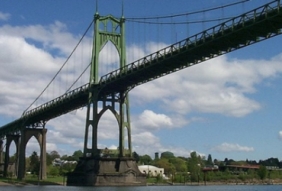
Posted on June 16, 2016
By John Gallagher, IHS
American regulators have made public a long-awaited proposal to dredge contaminants from the Lower Willamette River in Portland, Oregon.
Known as the Portland Harbor Superfund Site, the US Environmental Protection Agency (EPA) has proposed a USD750 million dredge and capping scheme in which roughly 1.45 million m3 (1.9 million cubic yards) of material would be dredged from a 16 km (10 mile) stretch of the river where contaminants pose the highest risk to people and wildlife.
At the end of the 7-year dredging period, EPA estimates that cancer and other serious contamination risks will be reduced by up to 100 times the current risks.
“Release of this plan is a significant milestone in the path to cleaning up the Portland Harbor Site,” said Jim Woolford, a director at EPA’s Superfund and Remediation office. “We believe the proposed alternative is a sound cleanup approach that is consistent with national regulations and policies.”
EPA regional administrator Dennis McLerran said he expects the project to “serve as an engine for local economic development by generating construction jobs while the project is underway, leading to an important economic revival by providing certainty for future development”.
In addition to the 117 ha (290 acres) to be dredged or capped, approximately 5,944 m (19,500 ft) of contaminated river bank would also be removed. Disposal of dredged sediment would be in an on-site confined disposal facility and in upland landfills. The dredging portion of the project would be followed by a 23-year monitored natural recovery period.
During testing and sampling over the last 10 years, more than 40 contaminants were found in river sediment at high-risk concentrations. Contaminants include polychlorinated bi-phenyls (PCBs), dioxins and furans (byproducts of industrial manufacturing), and pesticides such as DDT, according to the EPA. The agency noted that people who eat fish from the river are most at risk of exposure to contaminants.
The main goal of the cleanup, the EPA noted, is to reduce levels of contaminants in fish to allow for human consumption. Productive re-use of valuable commercial property is another benefit of the cleanup project, according to the agency.
The EPA outlined several alternate dredging plans of varying costs and project size. The public will have until 8 August to comment on the various cleanup scenarios, after which the agency will select a final alternative.
Officials at the Port of Portland, which operates cargo terminals within the project area, said they plan to review the proposal and participate in the comment period.
Source: IHS





